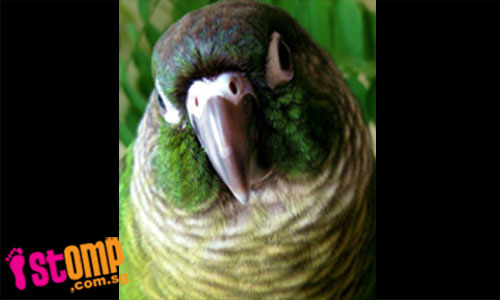
Faith is crying without ease now that Joy is missing, said STOMPer Christine. She appeals for help to find her other parrot, Joy, who had flown out of her home in Toa Payoh this afternoon (May 15).
In an email, she said:
"I've lost my beloved parrot, Joy, this afternoon at Toa Payoh.
"I had let Joy and his mate, Faith, out for playtime on the floor as usual.
"I didn't expect Joy to fly out while I was busy in my room doing things.
"Now Faith is crying without ease and I've been searching high and low around my block for Joy.
"If anyone sees a Green Cheek Conure, please contact me immediately.
"It's such a pain to see the pair of parrots being separated as they've been together since they were babies.
"A token of appreciation will be given for your kind action.
"Thank you!"
Please email STOMP at stomp@stomp.com.sg if you have any information regarding this STOMPer's pet.
Indeed, parrots are known to form very strong pair bonds; even outside of the breeding season, when many species congregate in large flocks, the pair remains close together. In the case of captive parrots, the object of their affection often turns out to be a human being, and they can become extremely jealous and destructive when they feel that they are not receiving enough attention.
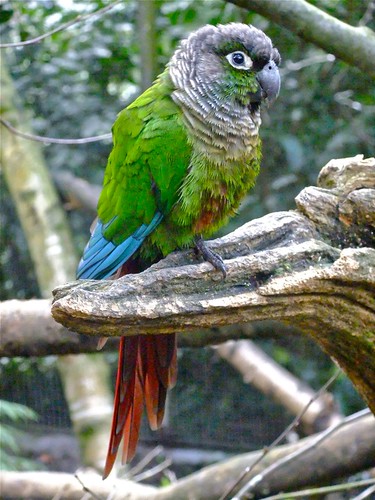
(Photo by P. Stubbs photo)
The green-cheeked parakeet or green-cheeked conure (Pyrrhura molinae) is a relatively small species of parrot that is native to forests and woodlands of the Mato Grosso in Brazil and Bolivia, extending to northern Argentina and Paraguay.
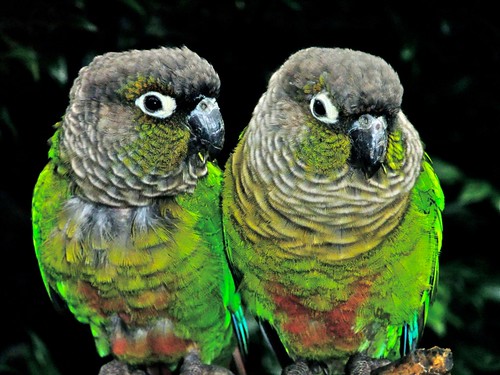
(Photo by P. Stubbs photo)
It is another common species in aviculture, and is said to be playful, affectionate and intelligent. They can be trained to talk, although their ability to do so is limited compared to other parrot species.
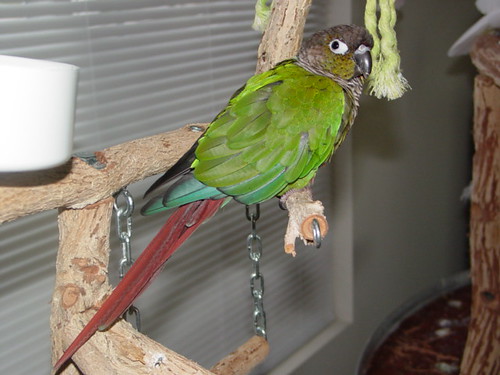
(Photo by Jim B L)
They are not considered extremely loud parrots (comparatively speaking), and so the green-cheeked conure is thought to be suitable for people living in apartments.
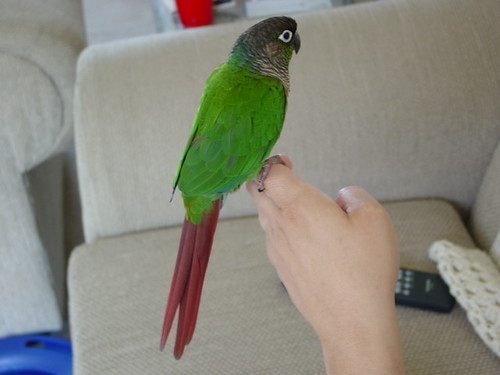
(Photo by Jim B L)
Like previous reports of missing parrots, this is just another incident which adds to the growing list of exotic parrot species that may be encountered in the wild in Singapore. It is unlikely that the green-cheeked parakeet will ever become established here, although one cannot completely discount the possibility. After all, at least 5 non-native species of parrot are known to breed locally, and given that parrots are long-lived, there is always the possibility that an escapee will live long enough to eventually encounter and breed with a compatible partner that has just escaped. The green-cheeked parakeet itself has been recorded at Changi South, with 2 birds seen in January 1999.